These interactive installations are Instagram-ready
NEW YORK — South Korean artist JeeYoung Lee stood surrounded by piles of New York City trash: 4,500 plastic water bottles, 1,500 wine corks, dozens of sheets of cardboard and recycled newspapers. Lee, who lives in Seoul, was in a warehouse in Williamsburg, Brooklyn, last week, turning the local garbage into a cheery seascape installation, complete with gulls and rolling waves against a backdrop the colour of Caribbean waters. At the centre of it was a sailboat, where visitors could perch, bobbing on a sea of their own detritus. By Lee’s request, the newspapers covering her boat were awash in articles about Hurricane Harvey.
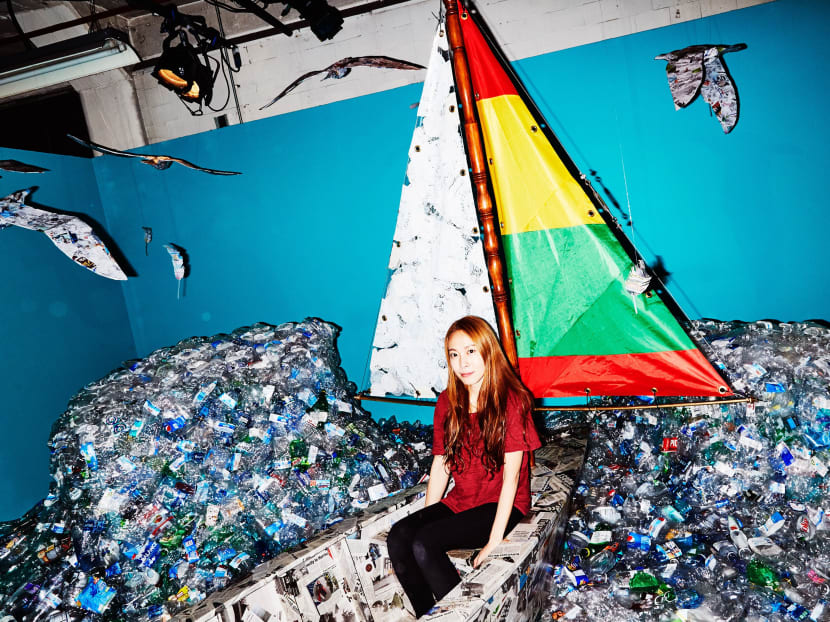
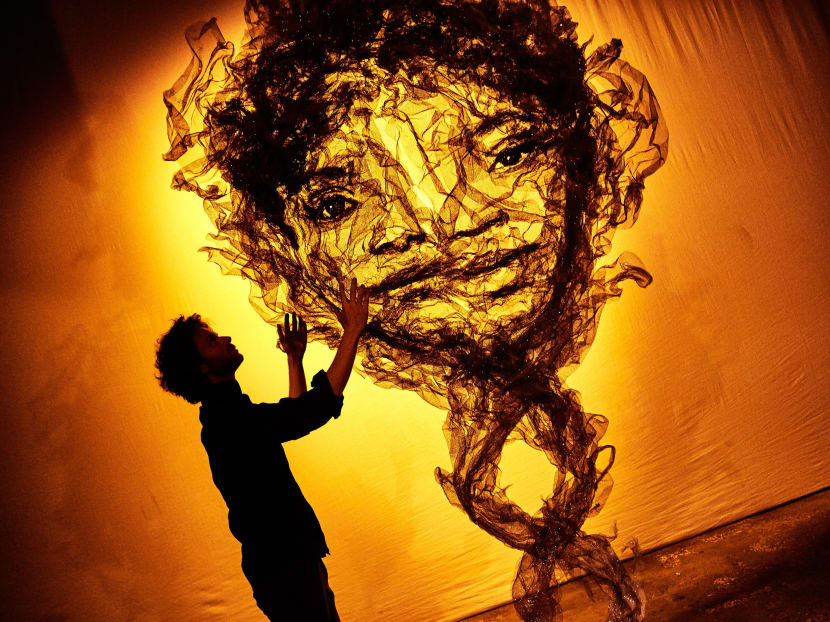
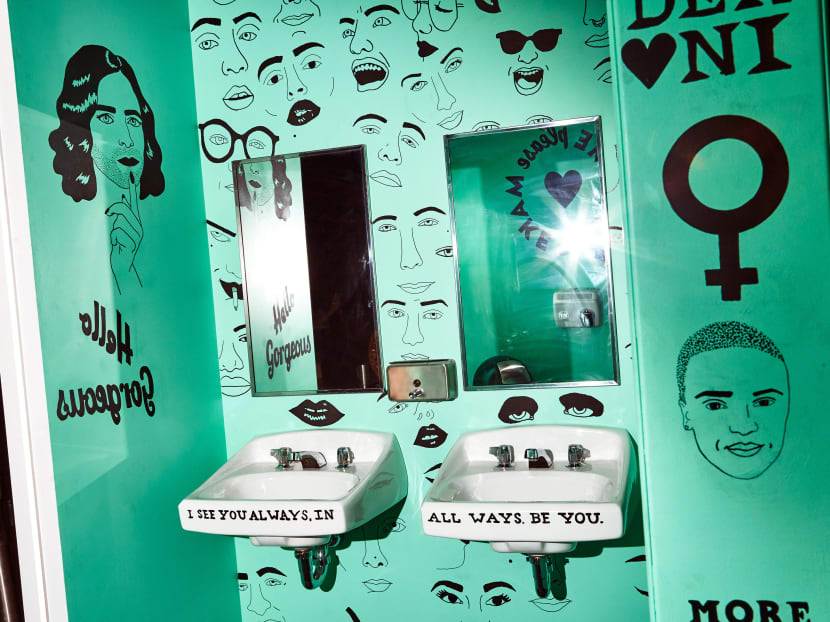
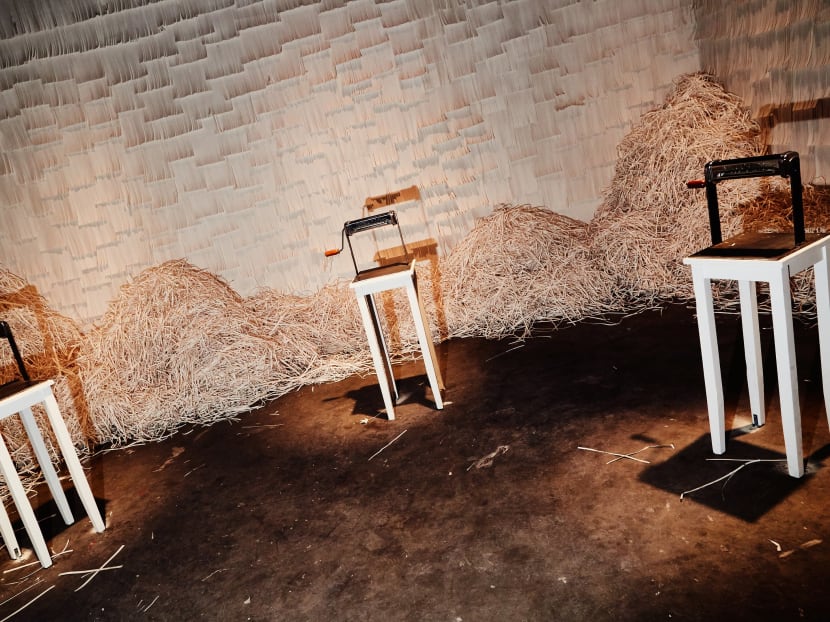
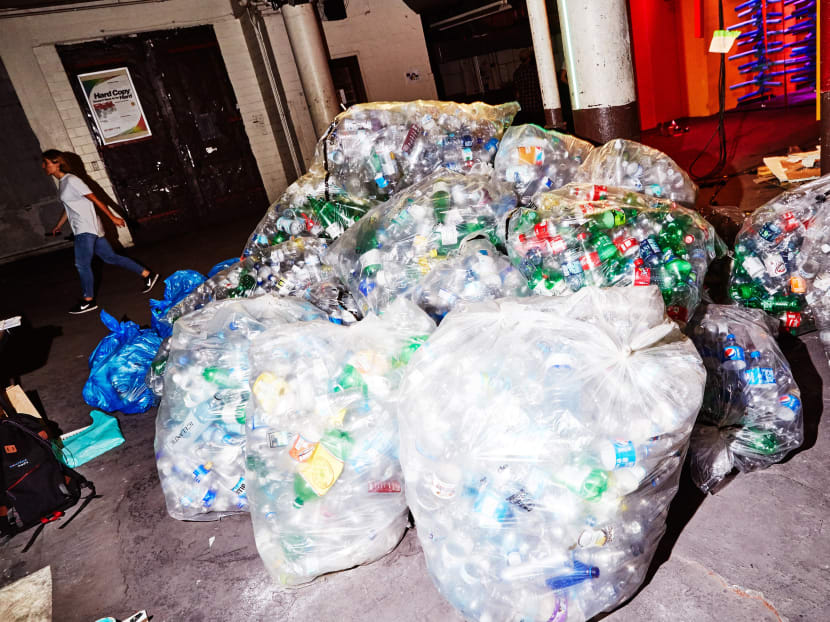
NEW YORK — South Korean artist JeeYoung Lee stood surrounded by piles of New York City trash: 4,500 plastic water bottles, 1,500 wine corks, dozens of sheets of cardboard and recycled newspapers. Lee, who lives in Seoul, was in a warehouse in Williamsburg, Brooklyn, last week, turning the local garbage into a cheery seascape installation, complete with gulls and rolling waves against a backdrop the colour of Caribbean waters. At the centre of it was a sailboat, where visitors could perch, bobbing on a sea of their own detritus. By Lee’s request, the newspapers covering her boat were awash in articles about Hurricane Harvey.
Her message — environmental disaster atop environmental disaster, some of it made by humans — may resonate on Instagram, where images of her project are certain to be shared. Or it may get lost amid the selfies and bright visual pop of her work. Either way, she said, she felt it would make its mark.
Lee’s work, Ocean of Creativity, is part of 29Rooms, the pop-up interactive experience by the media site Refinery29. In its third year, 29Rooms, which runs Friday through Monday, has reached new heights of popularity, and will expand to Los Angeles in December. At US$19 (S$25.50) apiece, 18,000 tickets to the New York exhibition sold out in advance, even before the participating artists — including Jill Soloway, the design team Chiaozza, the musical duo Chloe X Halle and the writer and social media star Cleo Wade — were announced.
Held during Fashion Week, it was created partly as an alternative to designers’ exclusive after-parties, and as a canny exercise in brand-building and marketing. Now, 29Rooms has become an Instagram magnet and a creative playhouse for the stylish set — Sleep No More with less theatre and more notable graphic design. It’s fun.
“We are hungry for all things immersive,” said Karen Wong, deputy director of the New Museum, who attended 29Rooms last year. “It’s a byproduct of us spending an inordinate amount of time on our screens.”
That some people attend to plump up their own social media feeds is “bringing us full circle”, Wong wrote in an email. (Refinery29 was also the media partner for the Pipilotti Rist exhibition last year at the New Museum.)
Held this year in an 80,000sqft warehouse, 29Rooms is meant to evoke a sculpture park, allowing visitors to wander from, say, a room where they can hit punching bags stenciled with empowering messages, to a wishful virtual reality presentation called NeuroSpeculative AfroFeminism by Hyphen-Labs, a tech collective of women of colour.
Finding the balance between heavy themes and glossy diversions was the challenge. “We started out and we had all thought-provoking rooms and we thought, let’s add more joy,” said Piera Gelardi, a co-founder of Refinery29. “Joyfulness and optimism feels really necessary right now.”
As she gave a tour of the space in its final stages recently, Gelardi, an art buff, explained the rationale behind the social-media-ready experience she was trying to create. “It’s important that we don’t devalue work that’s not image-friendly,” she said carefully. But, she added, “we’ve always overindexed for art that’s, like, wall-friendly”.
With 29Rooms, “we wanted to create a space where the art was instructive, art that people want to touch and taste and jump on”, she said. “We encourage people to document it. They feel like they are the stars of the show here.”
The theme, Turn It Into Art, was treated loosely in rooms designed by corporate partners from Dyson to Ulta Beauty. Social and political causes are checked off, too, with groups like Planned Parenthood and the Women’s March sponsoring installations.
In a room outfitted like a school restroom, Xavier Schipani was doodling on the stalls — “what I used to get in trouble for,” he said. The bathroom, by Jill Soloway and the production company Topple, was meant as a trans-safe space. The entryway made that clear with the message: “Every body welcome.” In black paint, Schipani drew slogans and faces (some self-portraits, too) on the green walls.
“It’s important for people to have some visual identity to go with the conversation about gender identity,” he said. Inside each stall was a recording of people’s experiences with gender.
Wade, the young poet of millennial uplift, also made a recording, of a meditative poem, for her room, called The Womb. It’s bathed in red light, with a squishy floor. “Sometimes I think we’re just running around stimulating ourselves and being like, ‘Am I looking at this art right?’” she said. In The Womb, “all I have to do is lay down and close my eyes”.
In an installation born of a digital world, many saw an opportunity to go low-tech. Belletrist, the online book club which actress Emma Roberts helped found, offered visitors the chance to sit on an oversize typewriter or hand-write notes on blank book pages.
For a collaboration with Chloe X Halle, the musical sisters, Benjamin Shine created an oversize sculpture of their faces, conjoined in metal that resembles tulle. (Shine otherwise sculpts in actual tulle.) The piece rotates languorously, to a low-key track the sisters composed, offering abstract and realistic angles as it moves. “Everything’s so fast these days,” Shine said. “I wanted to slow it all down.”
In a piece that is sure to be a selfie favourite, Alexa Meade created floridly patterned backdrops, outfits and accessories for people to step into; the effect, a form of “dazzle camouflage,” flattens out three-dimensional objects into two-dimensional space.
“Just paint, and a paintbrush can transport you,” Meade said. The person disappears into the frame. Instagram awaits. THE NEW YORK TIMES





